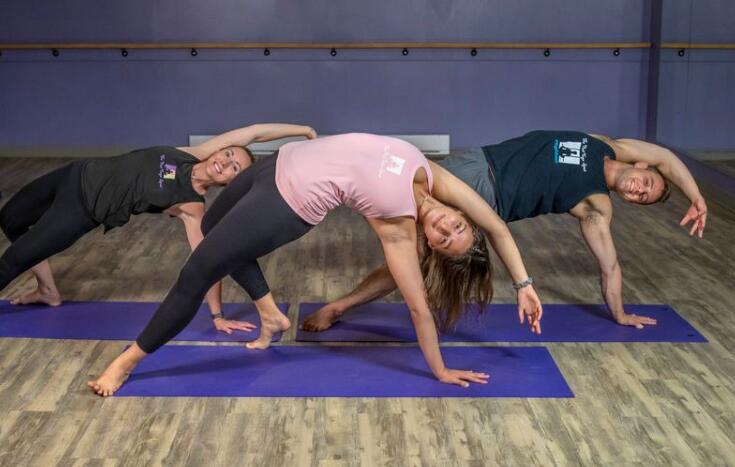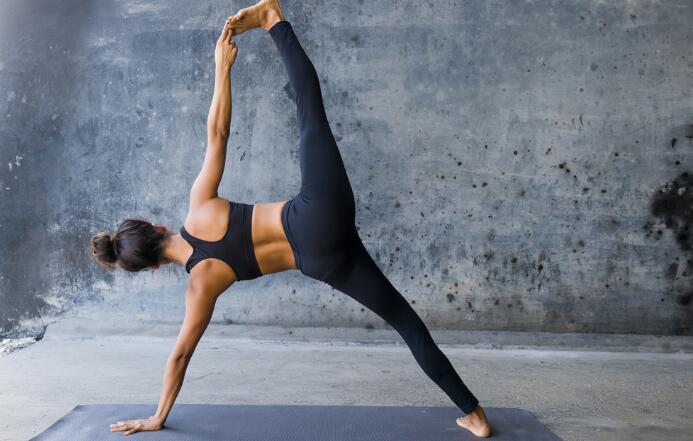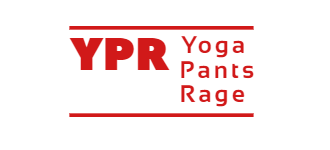If you’re looking for a challenging and energetic yoga practice, then power flow yoga is perfect for you!
This type of yoga combines Ashtanga, Vinyasa, and Iyengar Yoga styles to create a powerful and flowing sequence of poses.
In this blog post, we will discuss the benefits of power flow yoga and how it can help improve your overall health and well-being!
So, What Is Power Flow Yoga?

Power flow yoga was created in the 1980s by two American yogis, Beryl Bender Birch and Bryan Kest. Birch and Kest were influenced by Ashtanga Vinyasa Yoga – a style of yoga that emphasizes breath-synchronized movement – and began teaching their own version of Ashtanga Vinyasa Yoga in California.
Bryan Kest is credited with popularizing power flow yoga by making it more accessible to Western students. Unlike Ashtanga Vinyasa Yoga, which requires mastery of six different sequences before moving on to the next sequence, power flow yoga only has three sequences. This makes it more beginner-friendly and less intimidating for those new to yoga.
Power flow yoga is a dynamic and invigorating form of yoga that has been gaining popularity in recent years. If you’re looking for a workout that will leave you feeling energized and refreshed, power flow yoga is definitely for you!
It is a type of vinyasa yoga that emphasizes strength, stamina, and coordination. Unlike traditional yoga, which focuses on holding poses for long periods of time, power flow yoga consists of a series of fluid movements that are linked together by the breath. This makes power flow yoga an excellent workout for both the body and the mind.
The Benefits of Power Flow Yoga
There are many benefits associated with power flow yoga. Here are some of the most notable benefits:
Builds Heat:
One of the main benefits of power flow yoga is that it helps build heat in the body. This heat helps loosen muscles, support detoxification through sweating, and improve circulation. If you’re someone who gets cold easily or has trouble warming up before exercise, powerflow yoga may be a good choice for you.
Increases Strength and Flexibility:
Power flow yogo classes typically start with Sun Salutations – a series of 12 postures that warm up the body while building strength and flexibility. By practicing Sun Salutations regularly, you can expect to see an improvement in your overall strength and flexibility.
Improves Balance:
Another benefit of power flow yoga is that it helps improve balance. Many of the postures in power flow yoga require you to bear weight on one leg while maintaining your balance. Over time, you will notice an improvement in your balance both on and off the mat .
Reduces Stress:
One study found that eight weeks of Hatha yoga increased participants ’ self-reported levels of relaxation. Given that power flow yoga is a type of Hatha yoga, it stands to reason that power flow yoga would also be beneficial for reducing stress. In fact, one study found that just one session of power flow yoga was enough to reduce stress levels in police officers.
The Difference between Yoga Flow and Power Yoga

When people think of yoga, they often conjure up images of peaceful relaxation, gentle stretching, and deep breathing.
And while yoga can certainly be all of those things, another side to this popular exercise is often less talked about: the sweaty, heart-pumping, muscle-burning side. Welcome to power yoga.
Power yoga is a type of yoga that emphasizes strength and cardiovascular endurance. In contrast, yoga flow is a type of yoga that emphasizes flowing movements and breathwork. Both types of yoga have their own unique benefits, which we will explore in more depth below.
Yoga Flow
Yoga flow, also called vinyasa or vinyasa flow yoga, is a type of yoga that emphasizes fluid movements that are synced with your breath. Each movement in a yoga flow sequence is linked to either an inhale or an exhale.
This movement helps create heat in the body, which can lead to improved flexibility and detoxification.
Yoga flow classes typically move at a faster pace than other types of yoga classes like yin or restorative yoga. However, there are still opportunities for modifications and props are often used to help students achieve proper alignment.
Power Yoga
Power yoga takes the traditional elements of hatha yoga—such as proper alignment and intentional breathwork—and combines them with fitness-based movements to create a unique practice that is both challenging and invigorating.
Power yogis use their breath to help them move through each pose gracefully and easily while maintaining proper alignment.
Most power yoga classes are set to upbeat music, which helps keep participants motivated throughout the class.
Because power yoga classes focus on fitness and mindfulness, so they are an excellent way to build strength, flexibility, and stamina while reducing stress levels.
Can Beginners Practice Power Flow Yoga?
Yes, but it is recommended that beginners take a few yoga classes before trying power flow yoga. This will help you get familiar with the basic yoga poses and learn how to properly engage your muscles.
If you’re new to power flow yoga, start by taking a beginner-level class. These classes are typically slower-paced and offer more opportunities for modifications.
As you become more comfortable with the basic power flow yoga poses, you can move on to taking more advanced classes.
What to Expect from Each Power Flow Class Level?
A beginner class will start with some basic warm-up exercises followed by Sun Salutations (a sequence of 12 poses that are typically done at the beginning of a yoga practice).
From there, you will move into standing poses, sitting poses, backbends, and finishing poses. The class will end withSavasana (a pose where you lie on your back and relax), which is important because it allows your body to assimilate all that it has learned during the practice.
An intermediate class will move at a faster pace than a beginner class and might not spend as much time going over alignment cues since it is assumed that students already have a basic understanding of the poses.
You can expect to find more challenging poses in an intermediate class such as inversions (poses where your feet are above your head) and arm balances (poses where you bear your entire weight on your hands).
There will still be Sun Salutations and Savasana but they might be abbreviated so that there is more time for other types ofposes.
In an advanced class, you can expect even more challenging poses as well as longer holds in each pose.
There might also be sequences that are repeated multiple times so that you can really work on perfecting them.
There likely won’t be any Sun Salutations or Savasana since these are presumed to be familiar to students at this level.
Conclusion:
Power flow yoga is an exciting and challenging form of yoga that offers many benefits. If you’re looking for a workout that will leave you feeling energized and refreshed, power flow yoga is definitely for you! Keep these things in mind when getting started, and pretty soon you’ll be flowing like a pro!
